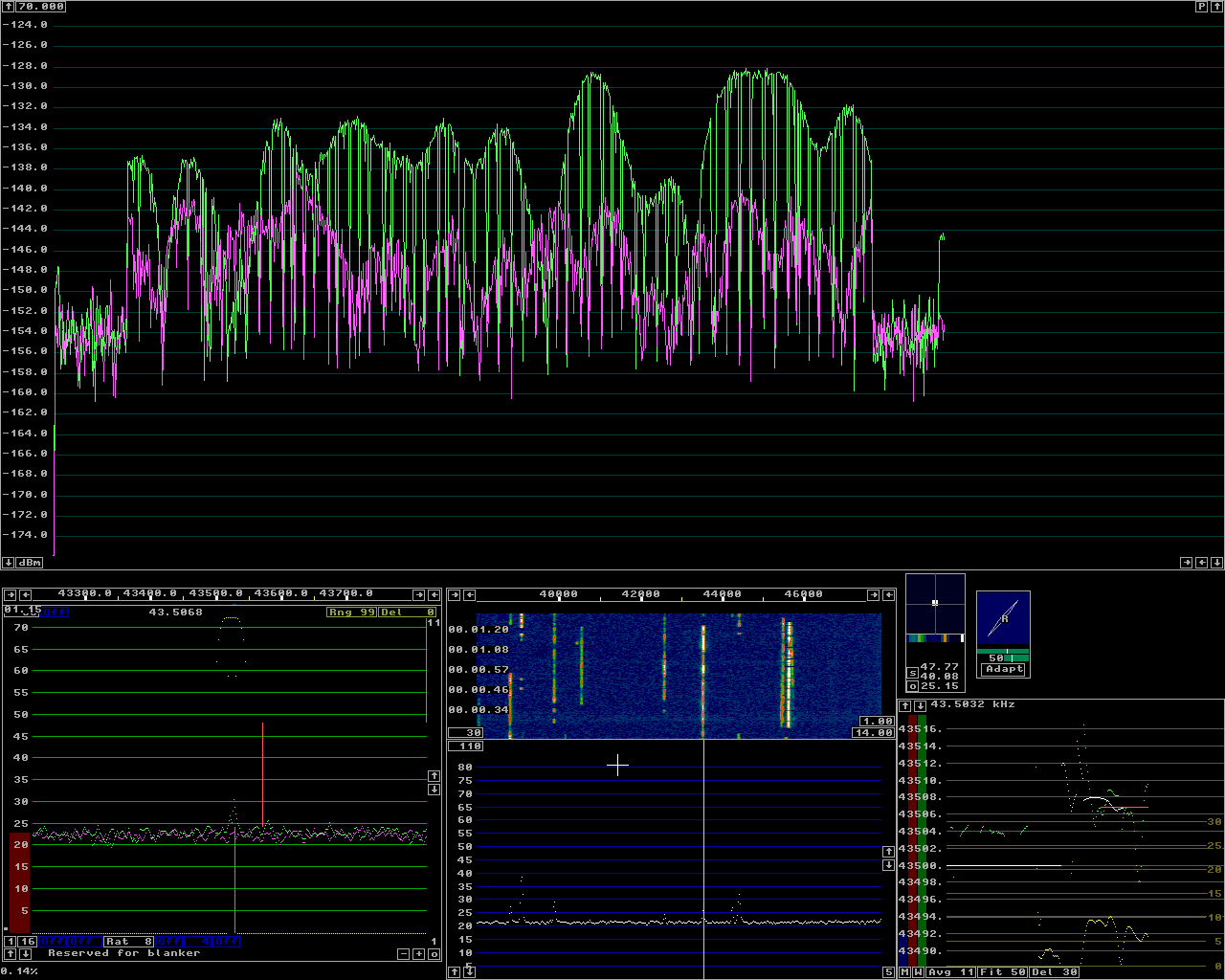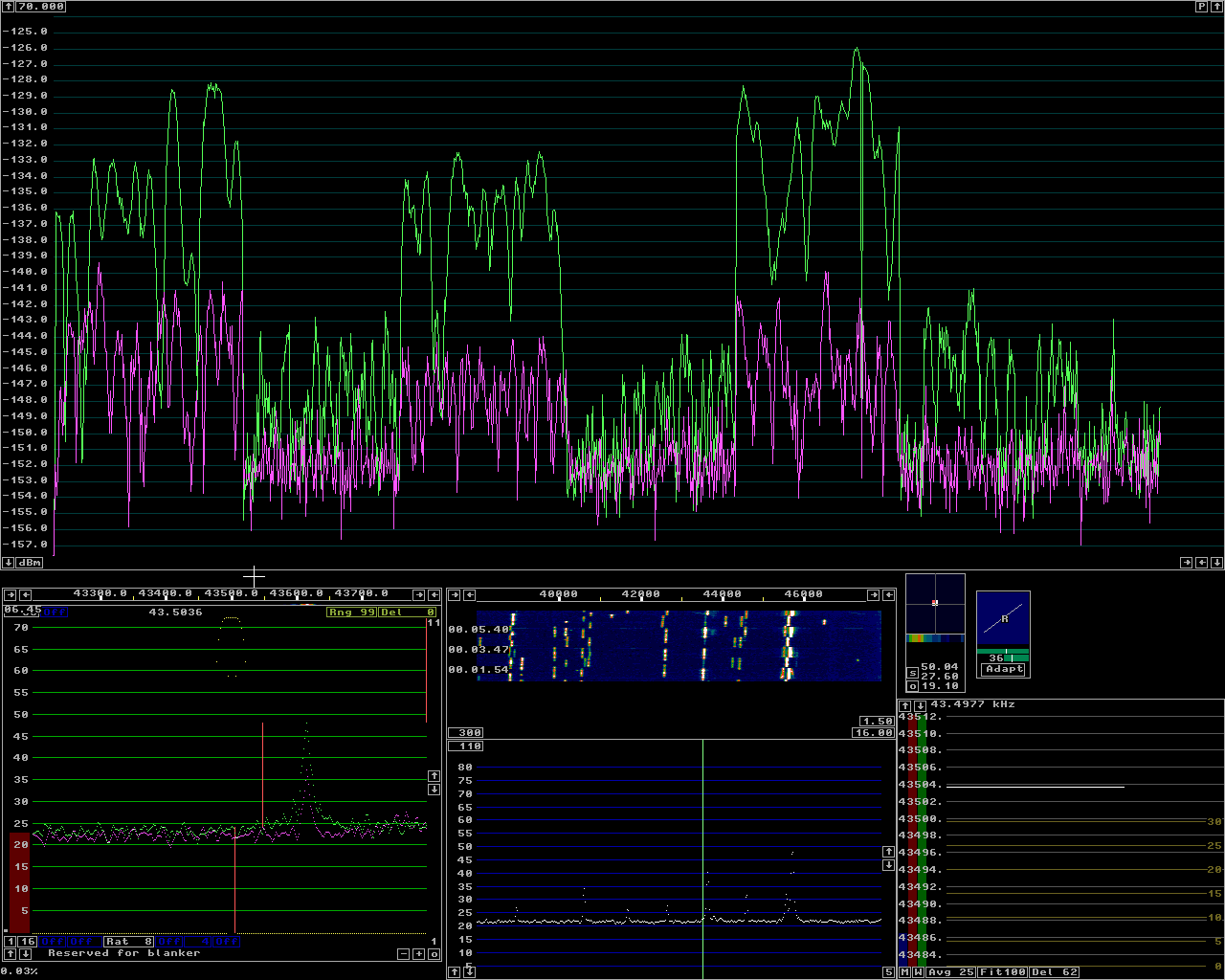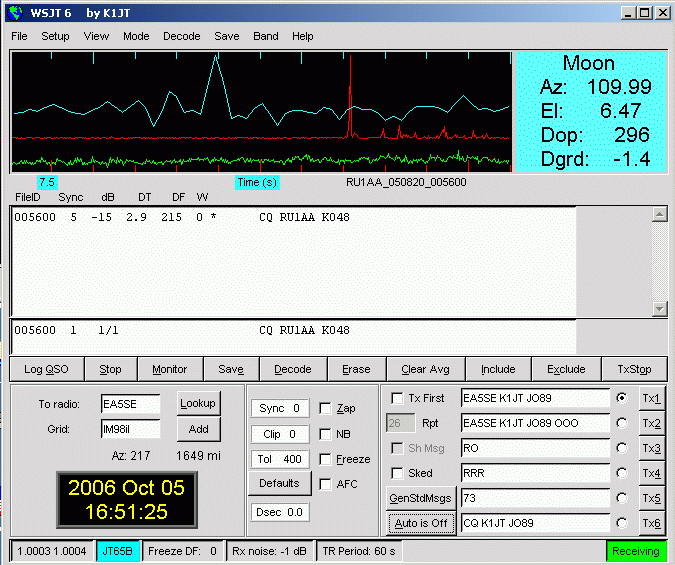
Fig 1.KB8RQ from the frh1135 recording In the S-meter graph, blue is RMS power with the optimum polarisation, red is the orthogonal signal.
The qsb of 144 MHz EME signalsThe file frh1135.bz2 was made during the ARRL 2001 EME contest. It contains the signals from many different stations with exceptionally good S/N. For details look hereFigure 1 shows the RMS power of KB8RQ at a high sampling speed that allows easy copy of the morse coding. |

Fig 1.KB8RQ from the frh1135 recording In the S-meter graph, blue is RMS power with the optimum polarisation, red is the orthogonal signal. |

Fig 2.KB8RQ from the frh1135 recording In the S-meter graph, green is peak power with the optimum polarisation, magenta is the orthogonal signal. |
|
At the maximum speed the peak power and the RMS power
is the same thing.
At slower speeds, the RMS power averages over several
data points and they may include points with no signal
during key up of the morse code.
Therefore the peak power is selected for figure 2.
For a continuous signal the difference is very small
between RMS and peak power for S/N ratios above 15 dB.
Figure 3 shows an even longer sequence at a lower speed on the S-meter graph. Look at fig. 3 here for a graph showing the same sequence in linear amplitude scale. |

Fig 3.KB8RQ from the frh1135 recording In the S-meter graph, green is peak power with the optimum polarisation, magenta is the orthogonal signal. |
The pattern in figures 1 to 3 is typical for EME signals
on 144 MHz.
The peak to average power ratio is in the order of 6 dB
on 144 MHz.
By operating on the QSB peaks CW operators can operate at signal
levels that are about 6 dB lower than one would expect from
the average signal level.
Of course such CW operation is very slow and inefficient because
one has to wait for QSB peaks that occur at points in time
when the needed information is transmitted.
A strong wsjt signalIn the library of files that comes along with the wsjt program there is one recording with RU1AA that decodes at -15 dB on the wsjt scale. The file is RU1AA_050820_005600.WAV and the wsjt screens for this file is shown in figures 4 and 5. |

Fig 4.The recording RU1AA_050820_005600.WAV from the wsjt tutorial package on the wsjt screen. |

Fig 5.The recording RU1AA_050820_005600.WAV from the wsjt tutorial package on the wsjt screen. |
|
Linrad does not yet have any routines to decode wsjt but
it can be set to handle the sync tone as if it were a CW
signal.
The result is shown in figure 6.
|

Fig 6.The recording RU1AA_050820_005600.WAV from the wsjt tutorial package on the Linrad screen. |
|
Linrad is set to repeat the recording endlessly.
The baseband filter is set to 5 Hz and the S-meter shows
the sync tone and its variation with time.
The wsjt value, -15 dB in 2.5 kHz corresponds to +12 dB
in a bandwidth of 5 Hz.
The noise floor is at -167dBm (based on my guess that the
noise figure is close to 0dB and that the antenna noise temperature is close to 300K.)
The vertical scale can be changed with the box in the upper
left box of the S-meter graph.
The peak S/N ratio is 21 dB on the Linrad screen.
This is 9 dB above the value given by wsjt which is about
3 dB more than expected.
Presumably wsjt computes the average power in the sync tone
channel over the entire transmission including times when
no sync tone is transmitted.
To SM 5 BSZ Main Page |